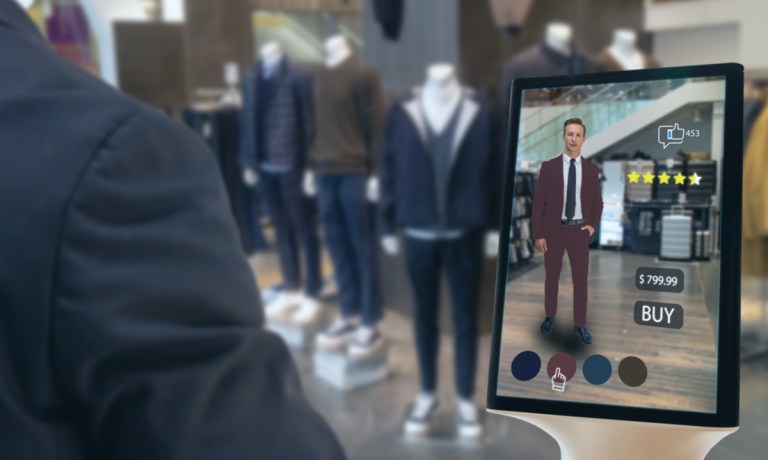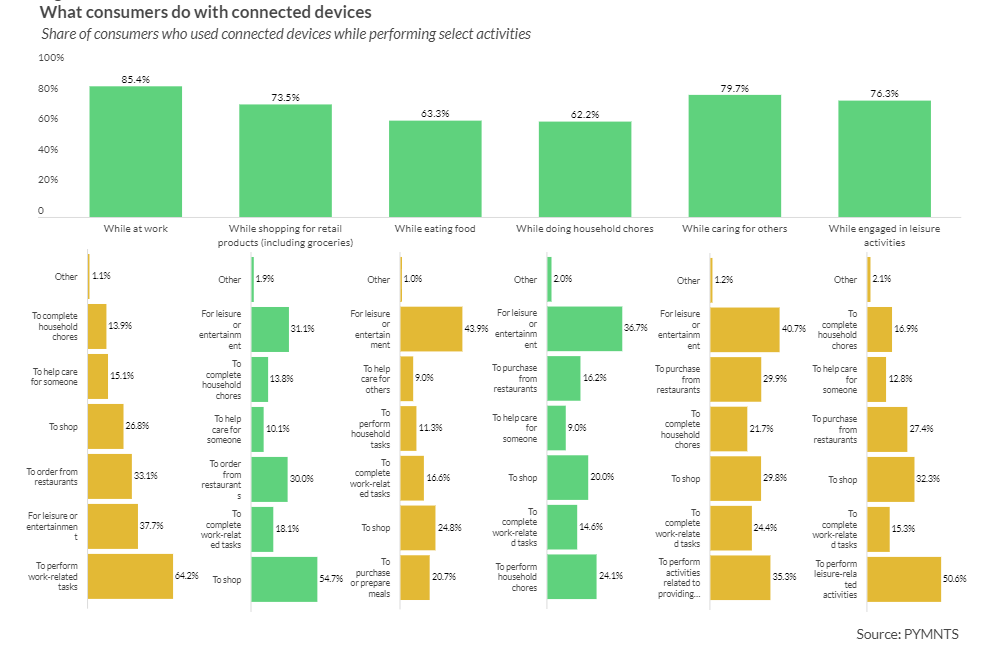
Amid busy schedules and constant demands, consumers are consistently in search of ways to maximize their time and handle multiple tasks with ease. This quest for efficiency has given rise to the prominence of connected devices as indispensable companions in individuals’ daily lives.
According to PYMNTS Intelligence research, the average consumer now owns six connected devices, with millennials and higher-income individuals leading the pack with an average of seven devices.
Smartphones remain the most common device, owned by 85% of consumers, while smartwatches have gained popularity among younger generations. Additionally, there has been a surge in ownership of smart home devices such as refrigerators and thermostats.
As the data shows, consumers spend a significant portion of their time multitasking with connected devices, regardless of whether it’s a weekday or weekend, with about 26% of consumers’ time dedicated to tasks unrelated to their primary activity.
These devices are used while performing activities like eating breakfast, commuting, and caring for others. Gen Z, in particular, excels at multitasking at work, seamlessly blending work and leisure aided by their familiarity with connected devices from an early age.
Examining the data further shows that the proliferation of connected devices and the growing desire to multitask has also fueled demand for connected buying experiences that streamline the shopping process and allow consumers to engage in other activities simultaneously.

For instance, one-third of consumers are intrigued by integrated buying experiences that combine shopping with entertainment. Imagine watching a livestreamed program on your mobile device, discovering an appealing piece of clothing or jewelry worn by an actor, and tapping the screen to access the product page and complete the purchase.
Similarly, 41% of consumers are keen on capturing photos of items using their smartphone and instantly navigating to the product page for purchasing, while 38% are keen on virtual shopping technology and the ability to visualize how a potential purchase would appear on themselves or within their home prior to completing the transaction.
“Such internet-connected buying experiences have even further potential to take multitasking to a new level with the help of artificial intelligence (AI) and other advanced technologies that can update and maintain the data required to power these features and supercharge personalization,” the study noted.
In this context, U.S. software company Firework has launched AVA, an AI Virtual Assistant that serves as an always-on, real-time sales assistant and customer support representative. AVA is powered by Firework’s proprietary large-language model (LLM) and presented as a lifelike, digital human avatar.
One of AVA’s features is its ability to answer customer questions and provide guidance based on their past purchase history, enabling consumers to make informed decisions and find products that meet their specific needs. AVA can even demonstrate products in real-time, offering a virtual shopping experience that closely resembles the in-store experience.
“With AVA, we are redefining customer engagement by providing a 24/7 virtual sales assistant that understands the unique needs of each brand and consumer,” Firework Co-Founder and Chief Executive Officer Vincent Yang, said in a Jan. 10 press release. “This level of personalization and real-time interaction” will ensure “that every customer’s experience is not only seamless but also genuinely connected and informed.”